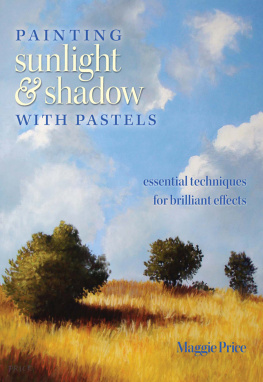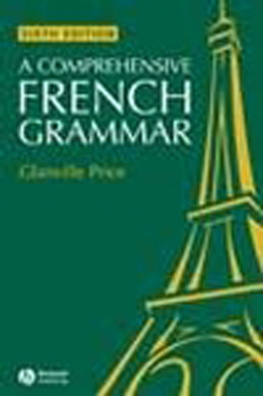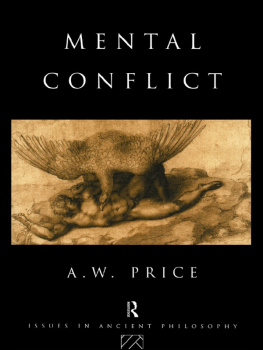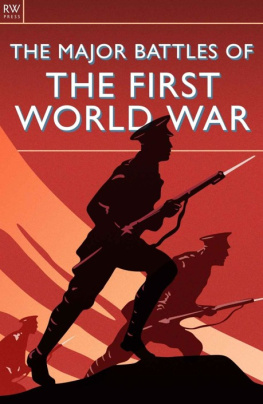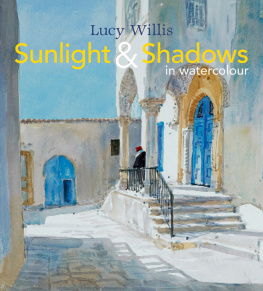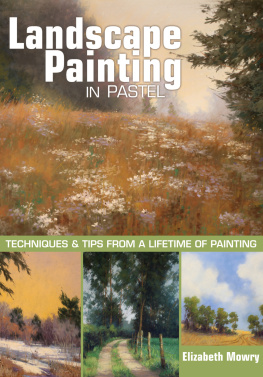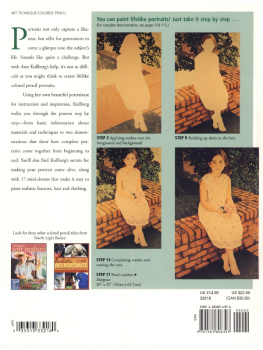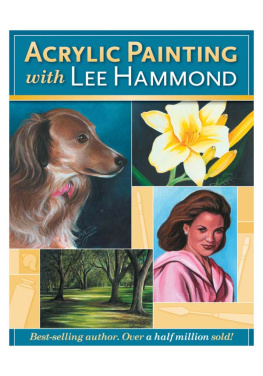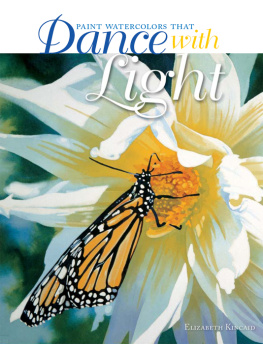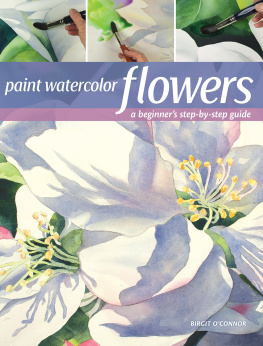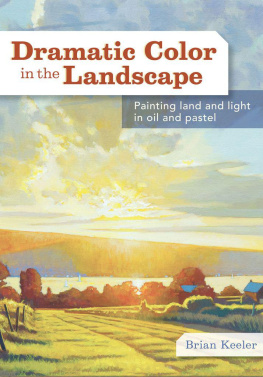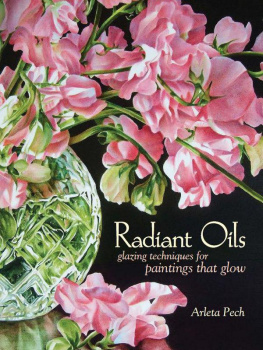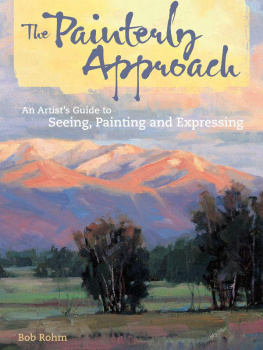Whether you paint outdoors in natural light or indoors from photographic references, understanding and accurately representing the effects of sunlight and shadow are crucial to making your paintings lifelike and believable.
Sunlight and shadow are the inseparable elements of describing form. A shape portrayed as totally in sunlight can appear flat and one-dimensional; a shape totally in shadow may nearly vanish. Think back to the basic exercise of drawing a cylinder and its components: the side facing the light source, the dark shadowed side opposite the light source, and the halftone area between where light and dark merge to create the dimension and shape of the cylinder.
These basic elements of light, dark and halftone are the first building blocks of describing form, but they are just the beginning. Exploring the nuances of sunlight and shadow can take as much time as the artist is willing to give.
While many of the concepts covered in this book can be applied to any medium, the illustrations, demonstrations and techniques shown are all in soft pastel. In my early years of painting, I worked in oils and journeyed through the mediums of acrylic, gouache and watercolor before I arrived at pastel. The luminosity and brilliance of this medium, together with its forgiving nature and ease of application, enchanted me from the beginning. If you're new to the medium, you'll find the step-by-step demonstrations especially helpful; if you're an experienced pastelist, I hope the demonstrations and concepts will open new doors of understanding.
Tool Checklist
BRUSHES
-inch (6mm), -inch (12mm) and 1-inch (25mm) synthetic brushes; -inch (12mm) fine mop brush; nos. 4, 6 and 12 water-color brushes; no. 10 Filbert
PASTELS
Soft(a minimum of 510 values of each of the following): beige, black, blue, blue-green, blue-violet, blue-gray, cool brown, gray-green, green, orange, red, red-orange, red-violet, reddish gray, violet, violet-gray, warm brown, white, yellow, yellow-orange, yellow-green
Harder(35 values each of the following): black, blue, brown
Pastel pencils: black, brown, light yellow, white
SURFACES
Ampersand Pastelbord, Canson Mi-Teintes, Pastelmat, Richeson premium pastel surface, UArt sanded pastel paper, Wallis sanded pastel paper
WATERCOLORS
Alizarin Crimson, Burnt Sienna, Burnt Umber, Cadmium Yellow (light and medium), Cadmium Yellow-Orange, Cadmium Red-Orange, Carbazole Violet, Cobalt Blue, Dioxazine Violet, Payne's Gray, Raw Umber, Sap Green, Titanium White, Ultramarine Blue, Winsor Green, Yellow Ochre
OTHER
Barrier cream (such as Gloves in a Bottle) or tight-fitting gloves, drawing pencils, drawing paper, fixative, foam pipe insulation, kneaded eraser, paper towels, pencil sharpener, ruler, tape, Turpenoid (blue label), rubbing alcohol or other mineral spirits
Important Techniques
So What, Exactly, Is a Soft Pastel?
The term soft pastel encompasses a range of pastel sticks from harder to softer. When people refer to hard pastels, they are actually referring to the harder form of the medium called soft pastel. In fact, many pastelists feel the medium should be called dry pastel to cover both the harder and softer versions, and to differentiate them from oil pastels. Soft pastels come in a variety of textures, from long, skinny, hard sticks to soft, buttery, rounded or squared chunks.
All pastels in the category of soft pastel are pure pigment (the same pigment used in oils and watercolors) mixed with just enough binder to hold the sticks together. They are applied dry by stroking the stick, held on its side or point down, upon a surface. Most often those surfaces are made especially for pastels and include textured paper and sanded surfaces designed to grab the pigment.
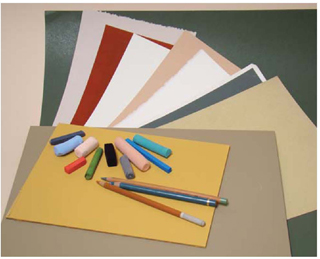
SOFT PASTELS AND SURFACES FOR PASTEL PAINTING
Surfaces vary in the amount of tooth, or surface texture, which holds the pastel pigment. Pastel sticks vary in shape and degree of softness. With a good toothy surface, you can use either hard or soft pastels, freeing you to make your choices based on color, value and temperature.
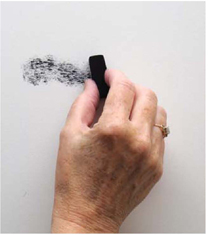
LAYING IN A BROAD STROKE
For a good portion of your painting, you'll lay in strokes of color with the pastel held on its side. This is the equivalent of the big brush in oil or other wet mediums. Beginning with large shapes of color will keep you from getting bogged down in details too early in the development of the painting. Holding the pastel on its side and stroking lightly is also the best way to layer color.

